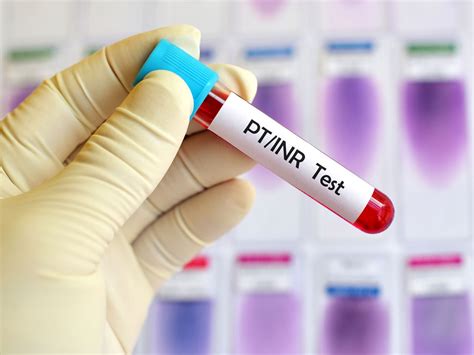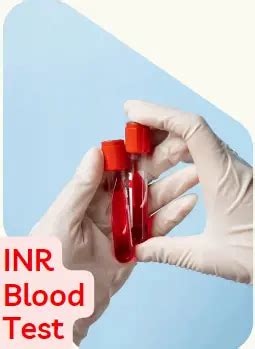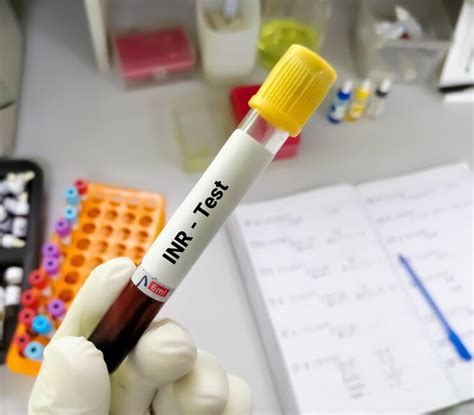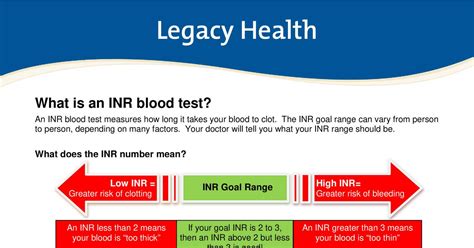Intro
Learn about INR blood test, a crucial diagnostic tool measuring blood clotting, prothrombin time, and international normalized ratio to monitor warfarin therapy, prevent thrombosis, and detect coagulation disorders.
The importance of blood tests in medical diagnosis cannot be overstated, and one such crucial test is the INR blood test. This test is a vital tool for patients on certain medications, particularly those taking anticoagulants or blood thinners. The INR blood test, or International Normalized Ratio test, measures the time it takes for the blood to clot and is essential for ensuring that patients are receiving the correct dosage of their medication. In this article, we will delve into the world of INR blood tests, exploring their purpose, procedure, and significance in maintaining patient health.
For individuals taking anticoagulant medications, such as warfarin, the INR blood test is a regular part of their healthcare routine. These medications are prescribed to prevent blood clots from forming, which can lead to serious health issues like strokes, heart attacks, and pulmonary embolism. However, the correct dosage of these medications is critical, as too little can be ineffective, while too much can increase the risk of bleeding. The INR blood test helps healthcare providers determine whether the patient's blood is within the ideal range for clotting, ensuring the medication is working as intended.
The process of undergoing an INR blood test is relatively straightforward. A healthcare professional will draw a blood sample from a vein in the patient's arm, which is then sent to a laboratory for analysis. The test measures the time it takes for the blood to clot, comparing it to a standard sample. The results are expressed as a ratio, with a normal range typically between 0.8 and 1.2 for individuals not taking anticoagulant medications. For patients on warfarin or similar medications, the target INR range is usually between 2.0 and 3.0, although this can vary depending on the specific condition being treated and the individual patient's health status.
What Is INR Blood Test Used For

The INR blood test is used for several purposes, primarily to monitor patients on anticoagulant therapy. This includes individuals with conditions such as atrial fibrillation, deep vein thrombosis, pulmonary embolism, and those with mechanical heart valves. By regularly checking the INR levels, healthcare providers can adjust the dosage of the anticoagulant medication to ensure it remains within the therapeutic range, minimizing the risk of both thrombosis and bleeding.
Benefits of INR Blood Test
The benefits of the INR blood test are numerous. It allows for the precise monitoring of anticoagulation therapy, reducing the risk of complications associated with both under- and over-anticoagulation. This test is also crucial for patients who are at a higher risk of bleeding or thrombosis, as it enables healthcare providers to make informed decisions about their treatment. Furthermore, the INR blood test can help identify any potential interactions between warfarin and other medications the patient might be taking, ensuring that the anticoagulant therapy remains effective and safe.How Is INR Blood Test Performed

The procedure for an INR blood test is simple and quick. It involves the following steps:
- Preparation: There is usually no special preparation required for an INR blood test, although patients should inform their healthcare provider about all medications and supplements they are taking.
- Blood Draw: A healthcare professional will clean the area where the blood will be drawn, typically from a vein in the arm, and then insert a needle attached to a syringe to collect the blood sample.
- Sample Analysis: The blood sample is sent to a laboratory where it is analyzed to determine the INR level.
- Results Interpretation: The healthcare provider will interpret the results, adjusting the patient's anticoagulant medication as necessary to maintain the desired INR range.
Understanding INR Blood Test Results
Understanding the results of an INR blood test is crucial for effective management of anticoagulation therapy. Here are some key points to consider: - **Normal Range:** For most individuals not on anticoagulant medications, the normal INR range is between 0.8 and 1.2. - **Therapeutic Range:** For patients on warfarin, the target INR range is usually between 2.0 and 3.0, but this can vary. - **High INR:** A high INR level indicates that the blood is too thin and the patient is at an increased risk of bleeding. This may require a reduction in the dosage of the anticoagulant medication. - **Low INR:** A low INR level suggests that the blood is not thin enough, and the patient may be at risk of forming blood clots. This could necessitate an increase in the medication dosage.Importance of INR Blood Test in Patient Care

The INR blood test plays a vital role in patient care, especially for those on long-term anticoagulation therapy. Regular monitoring helps in:
- Preventing Thrombosis: By maintaining the blood within the therapeutic range, the risk of thrombosis (blood clot formation) is significantly reduced.
- Minimizing Bleeding Risks: Adjusting medication dosages based on INR levels helps prevent over-anticoagulation, thereby reducing the risk of bleeding complications.
- Improving Quality of Life: Effective management of anticoagulation therapy, facilitated by regular INR blood tests, can improve the quality of life for patients, allowing them to engage in their usual activities with reduced risk of complications.
Common Conditions Requiring INR Blood Test
Several conditions require the use of anticoagulant medications and, consequently, regular INR blood tests. These include: - **Atrial Fibrillation:** A heart condition characterized by an irregular heartbeat, which increases the risk of stroke. - **Deep Vein Thrombosis (DVT):** A condition where blood clots form in the deep veins, typically in the legs. - **Pulmonary Embolism:** A blockage in one of the arteries in the lungs, often caused by a blood clot that has traveled from another part of the body. - **Mechanical Heart Valves:** Patients with artificial heart valves may require anticoagulation therapy to prevent blood clots from forming on the valve.Challenges and Considerations in INR Blood Test Management

Despite its importance, managing INR blood tests and anticoagulation therapy can be challenging. Some of the considerations include:
- Dietary Interactions: Certain foods, especially those high in vitamin K, can affect warfarin's efficacy. Patients must be aware of these interactions to maintain stable INR levels.
- Medication Interactions: Many medications and supplements can interact with warfarin, either increasing or decreasing its anticoagulant effect. Regular review of medications is essential.
- Lifestyle Factors: Alcohol consumption, smoking, and changes in physical activity can also influence INR levels, necessitating close monitoring and adjustments in therapy as needed.
Future Directions in INR Blood Test Technology
Advancements in technology are continually improving the management of anticoagulation therapy. Point-of-care INR testing devices, for example, allow patients to monitor their INR levels at home, providing immediate results and facilitating more precise control over their medication dosages. Additionally, research into new anticoagulant medications with more predictable effects and fewer dietary and medication interactions is ongoing, aiming to simplify the management of anticoagulation therapy and reduce the need for frequent INR blood tests.Conclusion and Next Steps

In conclusion, the INR blood test is a critical component of anticoagulation therapy management. By understanding the purpose, procedure, and significance of this test, patients can better navigate their treatment plans and work closely with their healthcare providers to ensure their safety and effectiveness. As medical technology and our understanding of anticoagulation continue to evolve, the role of the INR blood test will remain vital in preventing thrombotic and bleeding complications.
For those interested in learning more about INR blood tests or anticoagulation therapy, consulting with a healthcare provider is the first step. They can provide personalized advice and guidance based on individual health needs and conditions. Additionally, numerous resources are available online, offering detailed information on managing anticoagulation therapy, understanding INR results, and living with conditions that require long-term anticoagulant use.
What is the purpose of an INR blood test?
+The purpose of an INR blood test is to measure the time it takes for the blood to clot and to monitor patients on anticoagulant therapy, ensuring their blood is within the therapeutic range to prevent both thrombosis and bleeding.
How often should INR blood tests be performed?
+The frequency of INR blood tests varies depending on the patient's condition, the specific anticoagulant medication they are taking, and their stability on the therapy. Initially, tests may be performed weekly, but for stable patients, this can be reduced to every 4-6 weeks.
What factors can affect INR levels?
+Several factors can affect INR levels, including dietary changes (especially intake of vitamin K-rich foods), other medications or supplements, alcohol consumption, and changes in physical activity or health status.
We invite you to share your thoughts or ask questions about INR blood tests and anticoagulation therapy in the comments below. Your engagement and feedback are invaluable in helping us provide the most accurate and helpful information possible. If you found this article informative, please consider sharing it with others who might benefit from this knowledge. Together, we can work towards better understanding and management of anticoagulation therapy, improving the lives of those affected by conditions requiring long-term anticoagulant use.
